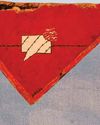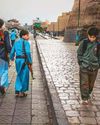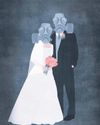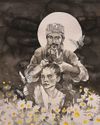
A silent assasin is stalking us more virulently than ever, especially our young, but to quote from Aleksandr Solzhenitsyn’s Cancer Ward, “you can have eyes and still not see”. It’s cancer, the second leading cause of death after cardiovascular diseases in India. Going by an estimate deduced from registered incidences since 2004, cancer cases in all age groups in the county is expected to reach 819,354 by the yearend. But the scarier bit, a cause of concern, is that cancer among adolescents and young adults—those between 15 and 29 years generally, and bundled under the abbreviation AYA—has risen over the years. An exact number isn’t available as data is still being collected. The volume could be significant because in a country of nearly 1.3 billion people, about 55 per cent of the population is below 35, and around 30-40 per cent of them are in the adolescent bracket.
Cancer in the AYA group is unique in the distribution of types as well as what it does to patients psychologically. As per Globocan 2018, International Agency for Research on Cancer, World Health Organization (WHO), the commonest cancers in this group are leukaemia (blood), germ cell tumour of the ovary, thyroid, oral, Hodgkin’s lymphoma, testicular, female genital tract malignancies, and bone sarcomas. A study from 2011 to 2014 on cancer patterns among 1,077 AYA cases at a tertiary care in northern India and published in South Asian Journal of Cancer in 2017 found that the most common was head and neck (32 per cent), followed by breast (14.2 per cent). “Cancer has the greatest impact on individuals from this group because it occurs when they are most productive. They suffer from adverse psychosocial effects because most of their potential years are spent battling cancer. This also puts a large economic burden on society,” says Ravi Mehrotra, chief executive officer, India Cancer Research Consortium.
Bu hikaye Outlook dergisinin February 10, 2020 sayısından alınmıştır.
Start your 7-day Magzter GOLD free trial to access thousands of curated premium stories, and 9,000+ magazines and newspapers.
Already a subscriber ? Giriş Yap
Bu hikaye Outlook dergisinin February 10, 2020 sayısından alınmıştır.
Start your 7-day Magzter GOLD free trial to access thousands of curated premium stories, and 9,000+ magazines and newspapers.
Already a subscriber? Giriş Yap

Soft Ruins
'Soft Ruins' is a chapter within the long-term ongoing project \"When Spring Never Comes\", an expansive exploration of memory, identity and displacement in the aftermath of exile within contemporary global politics. It reflects on how the journey as an asylum seeker in Europe mirrors the instability and threats of life under dictatorship, amidst rising right-wing movements and shifting power dynamics, where both certainty and identity are redefined

Building Beyond Homes: Provident Housing's Transformative Approach
Provident Housing leads in crafting thoughtfully designed homes that cater to modern homebuyers' evolving needs. With a focus on timely delivery, sustainability, and innovative, customer-centric solutions, the company sets new benchmarks. In this exclusive interview, Mallanna Sasalu, CEO of Provident Housing, shares insights into the company's strategies, upcoming projects, and vision for India's housing future.

Syria Speaks
A Syrian graffiti artist-activist's tale of living through bombings, gunshots and displacement

The Burdened
Yemen, once a beautiful land identified with the Queen of Sheba, is now one of the worst ongoing humanitarian disasters of modern times

Sculpting In Time
Documentaries such as Intercepted and Songs of Slow Burning Earth grapple with the Russian occupation beyond displays of desolation

The Story Won't Die
Is Israel's triumphalism over its land grab in Syria realistic? The hard reality is-Israel now has Al-Qaeda as a next-door neighbour

Against the Loveless World
In times of war, love exists as a profound act of defiance

Soul of My Soul
What does it mean to continue to create art during a genocide?

in Dancing the Glory of Monsters
By humanising the stories of those affected by war, poverty and displacement, Buuma hopes to foster empathy and inspire action

All the President's Men
Co-author of All The President's Men and one of the two Washington Post journalists (the other was Carl Berntstein) who broke the Watergate scandal that brought down the President Richard Nixon administration in the United States in 1974, Bob Woodward's recent book War was on top of The New York Times Bestseller list, even above John Grisham.